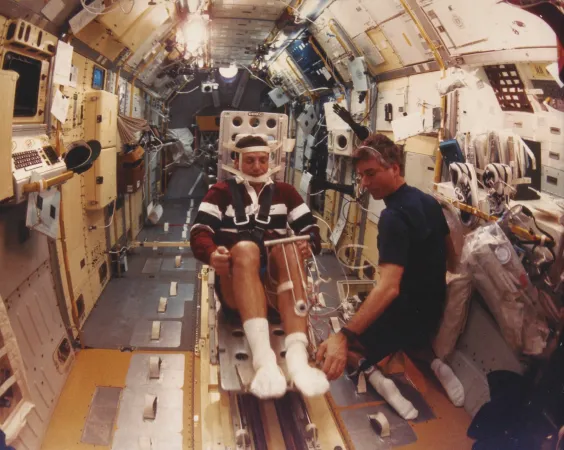Space Sled
This article was originally written and submitted as part of a Canada 150 Project, the Innovation Storybook, to crowdsource stories of Canadian innovation with partners across Canada. The content has since been migrated to Ingenium’s Channel, a digital hub featuring curated content related to science, technology and innovation.
It looks like an uncomfortable beach chair, complete with a polka-dotted umbrella. In fact, it is an experimental apparatus used aboard the Space Shuttle to test human adaptation to the microgravity environment of Space. The space sled, as it was known, was first deployed in 1992 aboard the Space Shuttle Discovery. Canada’s contribution to the International Microgravity Laboratory mission (IML-1), the sled tested human responses to Space flight, including vision, hand-eye co-ordination, and proprioception — the body’s ability to sense position, motion, and equilibrium. These experiments, devised by McGill University researcher Dr Douglas Watt in Montreal, sought to measure changes in the otolith, the gravity-sensing organ in the inner ear. Dr Roberta Bondar, Canada’s first female astronaut, used the space sled, which was positioned in the centre aisle of Discovery’s Spacelab module.
CAE Electronics of Montreal constructed the space sled.



























